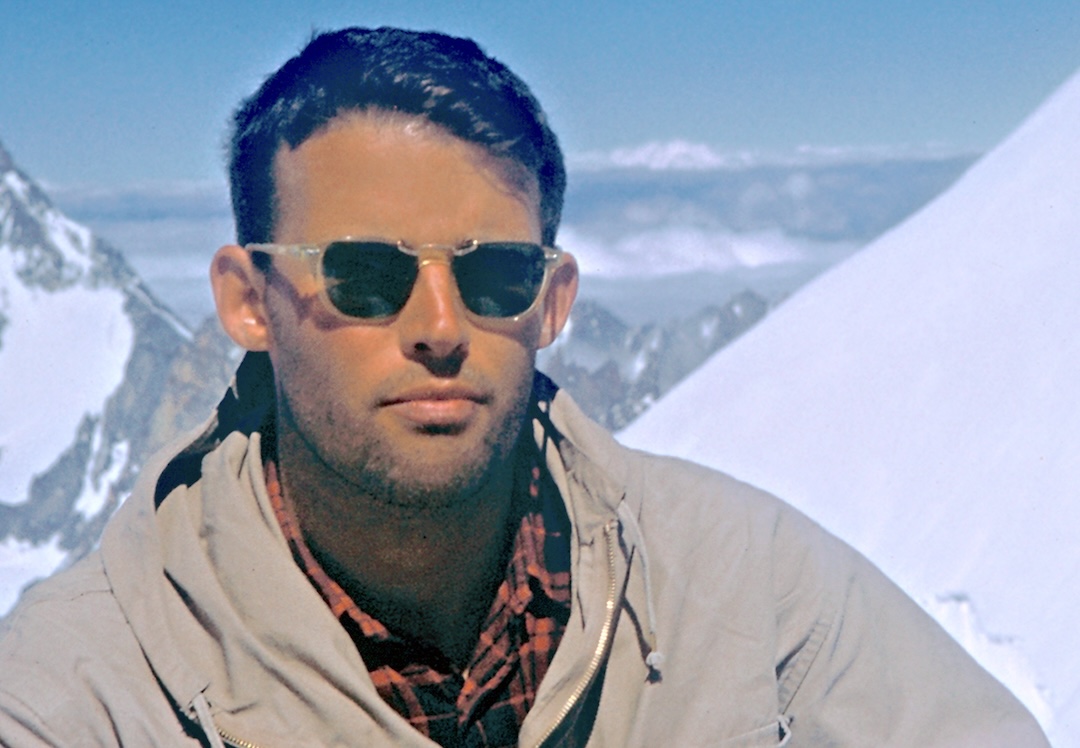John Allen Rupley, 1933–2024
 John Rupley died on July 20 from pulmonary arterial hypertension and cardiac failure, the result of chemotherapy-induced pulmonary fibrosis. A leading American alpinist from the 1950s through the ’70s, he also was a productive researcher and teacher at the University of Arizona, a gourmet cook, and a competitive pistol shooter.
John Rupley died on July 20 from pulmonary arterial hypertension and cardiac failure, the result of chemotherapy-induced pulmonary fibrosis. A leading American alpinist from the 1950s through the ’70s, he also was a productive researcher and teacher at the University of Arizona, a gourmet cook, and a competitive pistol shooter.
Well over six feet tall, with the physique of an NFL linebacker and a calm, fact-driven personality, John added great strength and endurance to his climbing parties. Over three decades, he made many first ascents in the Washington Cascades, Canadian Rockies, Alaska, Shawangunks, and the Tucson-area crags of Arizona.
Born in Brooklyn, he moved with his family to San Francisco when he was six and then to Guatemala City when he was ten, following his father, who was an executive for W.R. Grace. John returned to the United States at age 13 and attended the Hill School in Pennsylvania, followed by an undergraduate degree from Princeton and a Ph.D. in biochemistry at the University of Washington in Seattle.
At UW, he met Ila Ruud, who became his wife of 64 years and a lifelong climbing partner. They married in 1960 and moved to New York for John’s postdoctoral fellowship at Cornell; John taught Ila to climb during weekend trips to the Gunks and a honeymoon in the Alps.
John had started climbing at the Gunks during his second year at Princeton, meeting fellow student Jim McCarthy and becoming a frequent climbing partner of Hans Kraus and later Fritz Wiessner, beginning lifelong friendships.
One reason John chose the University of Washington for graduate studies was proximity to the extensive nearby alpine terrain. There, he began climbing with Fred Beckey, Don Gordon (Claunch), Tom Hornbein, Hank Mather, Herb Staley, and other top alpinists of those days. He had a productive climbing partnership and friendship with Beckey that lasted until Fred’s death in 2017.
In 1961, John and Ila moved to Tucson, where John served as professor in the Department of Chemistry and Biochemistry at the University of Arizona until retiring in 1998. His new job led to a climbing sacrifice, as he withdrew from the 1963 Everest expedition, of which he was an initial member, to focus on his work. His research in molecular biophysics led to significant contributions to the understanding of the role of water in enzyme activity and protein structure. He delighted in mentoring graduate students and postdoctoral associates.
Though he couldn’t go to Everest, John immediately saw the climbing potential of Mt. Lemmon near Tucson, and he and Ila began putting up new routes. Climbing for both joy and training for mountaineering, they didn’t name or grade routes or record their many adventures. Needing reference points, later climbers and authors named the Rupley Towers, The Rupley Route, The Lost Rupley Route, Rupley 1, Rupley 2, etc. Consequently, John and Ila’s names are etched in stone on Mt. Lemmon.
I met John in 1974 when he and Fred Beckey organized a trip to attempt the unclimbed northeast ridge of Mt. Clemenceau, one of the high peaks in the Canadian Rockies west of the Columbia Icefield. We became close friends on that trip, and my wife, Eloise, and I often visited John and Ila in their spacious adobe home.
After retiring from the university in 1998, John developed two new interests: gourmet cooking and competitive pistol shooting. Unable to escape his scientific inclination, he pursued both with precision and attention to detail.
In a note to Eloise and me a day after John’s death, Ila aptly described his love of the mountains: “John really thought of himself as an alpine climber. He left the Gunks to truly move into the ‘real mountains’. Rocks are nice, but the whole package of weather, ice, glacier knowledge, high altitude, the route-finding chess game, the isolation—all that was a much more satisfying world for him. And he loved the sweet air, the quiet, the fellowship and fun with his buddies. It was joy.”
—Gray Thompson

